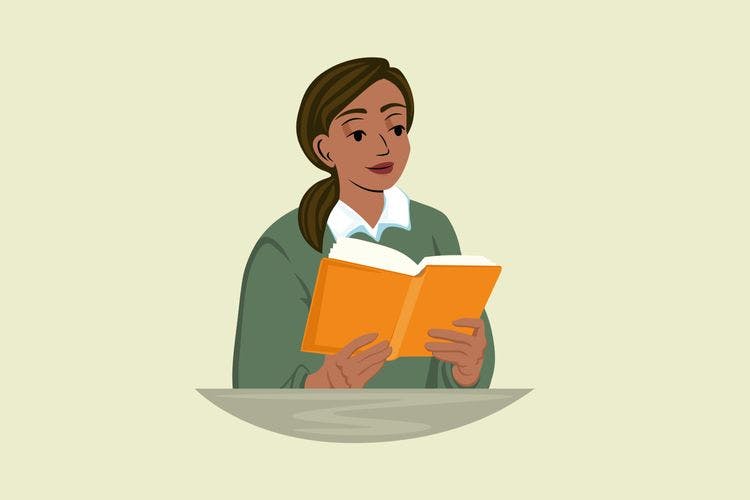Breaking Barriers: Dive into Basic Sign Language Phrases

Contents
As the modern world more and more approaches the principles of diversity and inclusivity, learning sign language becomes an essential skill for anyone aspiring to connect meaningfully with others and build bridges across different communities. This beautiful visual language uses hand gestures, sign language phrases, facial expressions, and body movements to convey meaning. Today, we’ll explore basic American Sign Language phrases and provide you with valuable tools to become fluent in one more tongue.
Learning the Alphabet: Basic ASL Principles
Like with any foreign language, it all begins with studying the alphabet. The first thing you need to know is that it is a system of hand signs used to represent each letter of the alphabet. In American Sign Language, the alphabet allows for spelling out names, places, and words that do not have a specific sign. So, to help you get started with using silent language words, we’ll describe each of the 26 letters of the American alphabet.
A: Make a fist, but with a twist! Tuck your thumb on the outside, right against your index finger.
B: Extend all your fingers straight up, keeping them together, and place your thumb across the palm.
C: Curve your fingers into a C shape with your thumb facing outward and your palm facing forward.
D: Extend your index finger upward while keeping the other fingers in a fist. Your thumb should be pressed against the bottom of your index finger.
E: Curve all your fingers downward, including your thumb, to form a loose fist.
F: Make a circle with your index finger and thumb, keeping the other fingers extended upward.
G: Hold your thumb and index finger parallel to each other, slightly open, as if you were going to pinch something.
H: Extend your index and middle fingers, keeping them together while tucking your other fingers and thumb in a fist.
I: Extend your pinky finger, keeping the other fingers and thumb tucked in a fist.
J: Extend your pinky finger and make a small hook or curve in the air as if you were writing the letter J.
K: Extend your index and middle fingers while keeping them apart. Your thumb should rest on the middle finger.
L: Extend your index finger and thumb to form a right angle (the shape of an L). Keep the other fingers in a fist.
M: Place your thumb under your first three fingers, which are slightly curved over your thumb.
N: Just like M, but this time, only your index and middle fingers curve over your thumb.
O: Create a perfect circle by touching your fingers and thumb together.
P: Extend your index and middle fingers, keeping them apart, then bend your middle finger down. Your thumb should chill on the middle finger.
Q: Make a fist with your dominant hand while extending your thumb and index finger (similarly to the letter G). Then, point the hand down with the palm facing forward.
R: Cross your index and middle fingers.
S: Make a fist, but this time, keep your thumb in front of your fingers.
T: Make a fist and place your thumb between your index and middle fingers.
U: Extend your index and middle fingers upward, keeping them together.
V: Extend your index and middle fingers upward, keeping them apart.
W: Extend your index, middle, and ring fingers upward, keeping them apart.
X: Extend your index finger and curl it down to form a hook shape while keeping your other fingers and thumb in a fist.
Y: Extend your thumb and pinky finger, keeping the other fingers in a fist.
Z: Use your index finger to draw a Z shape in the air.
Mastering ASL Common Phrases
That’s a great start! By learning the alphabet, you can easily start practicing. And now, it is time to move forward and extend your knowledge even more. Sign language is a fully complete language with humor, idioms, and common expressions. It means that you don’t need to spell each word letter by letter. Instead, simply memorize basic sign language phrases. Below, you can find some useful ones.
Greetings and Farewells
When greeting someone in sign language, you have plenty of options to choose from! There are general phrases, more specific expressions for different parts of the day, and even slang words! But let’s take it easy, and start with the simplest ASL phrases to know.
- Hello.
To sign this basic greeting, extend your hand out in front of you with your palm facing out and your fingers together. Move your hand outward in a short wave.
- Good Morning.
This one is quite tricky because it actually consists of two separate words. First, you need to sign “good.” You can do it by touching your lips with your fingers and then bringing your hand down to meet your other hand, palm up. Then, sign “morning” by raising your non-dominant arm, palm facing up, and moving your dominant hand, palm up, from the crook of your arm up toward the sky.
- Good Afternoon.
To sign this phrase, start with the word “good” again as described above, then sign “afternoon” by holding your dominant hand flat with the palm down and raising it above your non-dominant arm, also flat and palm down.
- Good Evening.
For the last greeting, you need to sign “good” one more time, then sign the word “evening” by placing your dominant hand flat and bent slightly at the knuckles, palm down, over your non-dominant arm, which is also flat and palm down.
- Goodbye.
And now it’s time for farewells! To sign goodbye, simply wave your dominant hand as you would when saying it.
- Take care!
Lastly, let’s spice things up a little bit and learn a casual farewell! To sign it, form a K shape with each hand (you can peek at the alphabet if you need a little reminder) and cross them over each other to form an X shape.
Embracing Politeness: Basic Phrases in Sign Language
As you can see, with a bit of practice, you can learn rudimentary phrases in sign language. When greetings are memorized, it is time to move forward in our politeness journey. Below, we’ve provided a list of some useful, respectful, and simple ASL sentences.
- Please – rub your flat hand in a circular motion on your chest.
- Thank you – extend your flat hand from your chin outward as if you are blowing a kiss.
- Sorry – make a fist with your dominant hand and rub it in a circular motion on your chest.
- Yes – nod your fist up and down, like your fist is your head nodding.
- No – extend your thumb, index finger, and middle finger, and repeatedly close them towards your thumb like a pinching motion.
- You’re welcome – there are a few variations for this. You can extend your flat hand from your chin outwards and downwards (similar to “thank you”), or you can make a half-circle motion with your flat hand in front of you.
With these simple yet important ASL phrases, you will be able to maintain basic conversations with deaf or hard-of-hearing people. Therefore, it is essential to memorize at least a few of them to ensure that you can interact inclusively and effectively with members of the Deaf community.
Common Sign Language Phrases for Emergencies
Since our lives are full of unexpected events, and they are not always pleasant, it is essential to be prepared for anything. Therefore, we’ve made a list of some emergency phrases, just in case. Of course, we hope that you won’t need them at all, but it’s better to be safe than sorry. Here are some useful and simple sign language phrases you might need to know.
- Help.
To sign this word, extend your thumb up, fingers extended and joined, then place your hand on top of your other flat hand, moving it upwards while keeping the palm facing upwards.
- Emergency.
Make a fist with your dominant hand, then extend your pinky finger straight up. Shake the hand slightly at the wrist.
- Call 911.
This one is quite simple. Firstly, sign “call” by mimicking a phone with your hand and then fingerspelling 9-1-1.
- I Need a Doctor.
Start by signing “I” by pointing to yourself. Then, follow it with the word “need” – drag the fingertips of one flat hand against the chest as if pulling something toward you. Finally, sign “doctor” by tapping your wrist with one hand, like taking a pulse.
2
ASL 101: Best Tips for Learning
How to speak sign language fluently? The answer is simple – just like any other tongue you want to learn. Mastering it can be an enriching experience, offering not only the ability to communicate in a new language but also insight into the Deaf culture. We’ve prepared a list of essential tips to help you get started and progress effectively in learning ASL:
- Start with the Basics. Don’t try to learn anything everywhere, all at once. Instead, focus on basics – alphabet, numbers, greetings, and emergency ASL sentences. This way, you’ll be able to track your progress, but you won’t be overwhelmed and disappointed.
- Use Visual Learning Tools. ASL is all about visuals, so don’t sleep on using them! Check out Youtube videos or specific mobile apps like Promova to make the most out of your studying.
- Practice Regularly. We’ve always said that practice makes perfect! Of course, it would be hard for you to master sign language in a day. However, by spending a few minutes or hours daily, you’ll receive your results even sooner than expected.
- Use Facial Expressions and Body Language. ASL uses facial expressions and body movements as part of its grammar. Practice using your face and body to convey meaning, which is crucial for effective communication in the language.
- Use your dominant hand. If you are just at the beginning of your learning ASL journey and are confused about which hand to use, don’t worry – it doesn’t matter whether you are right or left-handed. Just stick to the same hand as your dominant one to ensure consistency in your signs. It will make it easier for you and others to understand your signing.
And one last tip for you. Remember that you need to stay motivated during your studies. Don’t give up, and don’t try to memorize everything at once. Set different goals for your learning, like being able to have a 5-minute conversation in ASL by a certain date or signing an entire song. Celebrate milestones and believe in yourself, and you will definitely achieve the desired results!
The Importance of Knowing Basic Sign Language
Now that we’ve provided you with many useful expressions, let’s discuss one last thing. There are some people who underestimate learning sign language. However, we believe that it is a vital tool that facilitates inclusivity, enhances personal connections, and opens doors to understanding a rich and diverse culture. Here are some of the key reasons why learning basic American Sign Language phrases is important:
- Better Communication. Sign language opens up a whole new world of connection! It lets you chat with people who are deaf or hard of hearing, which can be a game-changer in situations where clear, fast communication is key. Think medical emergencies, classrooms, or the workplace – being able to explain yourself quickly and clearly can really make a difference.
- Promoting Inclusivity. Just picking up some basic ASL phrases for beginners is already a step toward a more inclusive world. It breaks down barriers that can isolate people who rely on sign language. When we learn and use it, we’re creating a sense of belonging for those who often face communication hurdles.
- Improving Cognitive Abilities. Who knew that learning sign language could be a real workout for your brain? Studies show it can boost cognitive processing, improve memory, and even push back the onset of dimension. Plus, the visual-spatial aspect of sign language hones your peripheral vision and attention skills!
- Career Opportunities. Understanding sign language can be highly beneficial for your career. It’s useful in different fields, like education, social work, linguistics, interpretations, etc.
As you can see, learning common phrases in sign language can benefit both the world and you personally. So, if you are still hesitating about what language to learn next, why not give American Sign Language a shot? It is a perfect way to broaden your horizons and help create a more inclusive society.
Memorize Phrases in Sign Language with Promova
Deaf and hard-of-hearing people study sign language from their childhood. Hence, if you are starting to learn it at an adult age, it might be a bit tricky and challenging. But no worries! Promova’s got you covered. With our convenient application, you can start your ASL course and reach your desired goal. After installing the app on your Android or iOS device, you access:
- Convenient and engaging ASL lessons created by language professionals. Whether you are a beginner or an experienced learner, you can definitely find something worthy of your attention.
- Various materials for different learning styles. Those who learn ASL with the Promova app access written materials and hand-crafted GIFs, which allow them to make the most out of their studies.
- Bite-sized learning. You don’t need to be bored and tired when learning ASL or any other language. Therefore, we do our best to create materials focused only on the essential things, saving you from being overwhelmed by all the unnecessary information.
- Accessibility. Regardless of your location, you can easily launch the Promova app on your phone or tablet. Whether stuck in traffic or lying in your bed, you can spend only a few minutes and become one step closer to achieving your study goals.
All you need to do is install the application, select the desired studying course, provide some information about your current proficiency level in the language you want to learn and access the materials tailored specifically to your needs. So, don’t hesitate, and enjoy your journey to fluency with Promova!
Conclusion
Right now, there are over 400 million deaf and hard-of-hearing people in the world, making it almost 6% of the planet’s entire population. Therefore, learning basic ASL sayings and phrases is essential for everyone. You never know where you can meet a deaf person – at the bus station, working in the cafe, or staying behind you in line. Hence, it is vital to be prepared for different circumstances to be able to provide help, support, or simply maintain the conversation.
In today’s article, we’ve listed some of the most widespread and easy sign language phrases. But, of course, there is much more than that! We hope that this article will become the beginning of your thrilling journey into the world of ASL and other sign languages. Let’s together make the world we live in more diverse, accepting, and inclusive. And that’s it for now, so we’ll see you in the next article!
FAQ
How long does it take to learn basic sign language?
Such time frames depend on various factors. Generally, the person might need from a few weeks to a few months to learn basic sign language skills, including the alphabet, numbers, everyday phrases, and common vocabulary. However, the frequency of your practice, the level of motivation, the desire to study, and many other factors can adjust this time frame.
Is sign language universal?
Sign language is not a one-size-fits-all kind of thing. There are many variations across the globe. For example, ASL, which we’ve discussed in this article, is mostly used in North America and some parts of Canada. Meanwhile, British Sign Language is the go-to in the UK.
Is sign language only for deaf people?
Although it is the main means of communication for deaf and hard-of-hearing people, it is not only learned and used by the Deaf community. Many hearing individuals learn it for various purposes. For example, those who have deaf family members, friends, or coworkers might learn the language for more effective communication. Also, it might be for professional purposes or simply for promoting diversity and inclusion.
How should I communicate with a deaf or hard-of-hearing person?
The first thing you need to do is to ask whether the person knows sign language. If yes, you can use basic phrases and expressions to ask questions and maintain conversation. But if not, or if you are not sure about your current level of ASL, you can try to communicate using gestures, facial expressions, and body language. Also, if the person is a lip reader, try to articulate your words while speaking at a normal pace. And, of course, you can always use your phone to write down the information, and your interlocutor can do the same.



Comments